Creating a VPC (Virtual Private Cloud) and interconnecting the VPSs.

In today’s post I want to show you how to create and configure a VPC in the Master Da Web control panel, we’ll also configure the network interfaces and interconnect the VPSs.
VPC is a virtual private network within the cloud. To put it more simply, it’s as if VPC were a virtualized switch. When we connect the VPSs to this switch and configure the VPS network card, they are interconnected and communicate, this network is completely isolated from the VPS’s public network, and it is also isolated from the internet and other VPSs within the data center network, the VPC also does not communicate with the internet, if you want to know more about VPC, check out our post explaining the theory of VPC, follow the link below.
When we create a VPC in the VPS control panel, a virtual switch is created, and a second network interface is created on the servers to be used to configure the VPC network. In today’s post we’re going to do this configuration step by step, we’re going to create a VPC and interconnect two VPSs, one with a Linux operating system, and the other with Windows Server, see below for the network topology.
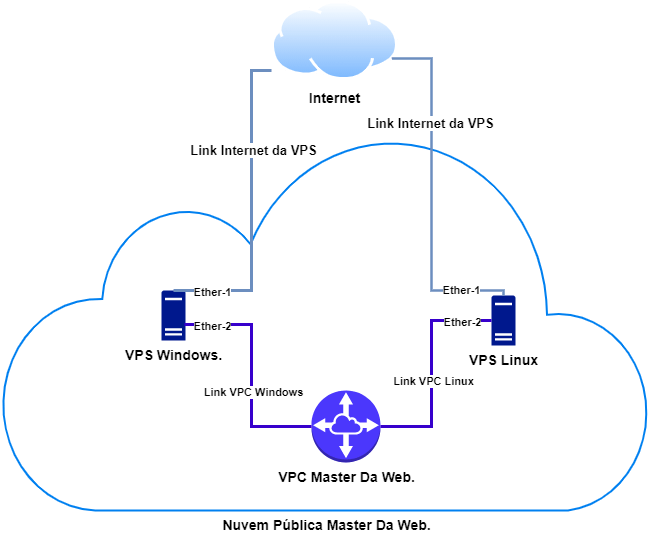
The first step is to access the VPS control panel by logging in to our website, after logging in to the main Dasboard screen, click on the manage button, and then click on the large green button that says Go to Control Panel. On the screen that opens, in the menu at the top left click on network and then in VPC and add a new VPC, as shown in the image below, click on the image to enlarge.
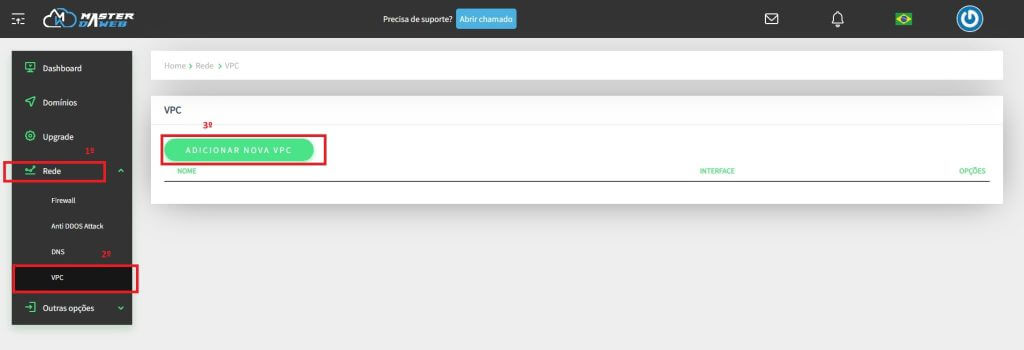
On the next screen specify the administrative name for your VPC, if you wish add a description and select the cluster, all as shown in the image below, click on the image to enlarge.
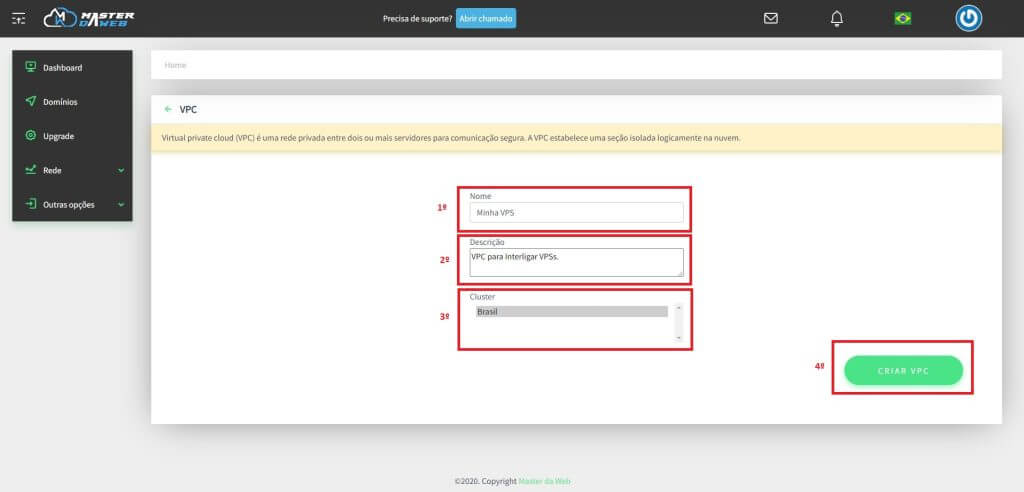
Once the VPC has been created, you need to inform which VPSs will be part of this VPC, click on the add VMS button and add the VPSs you want as shown in the image below, click on the image to enlarge.
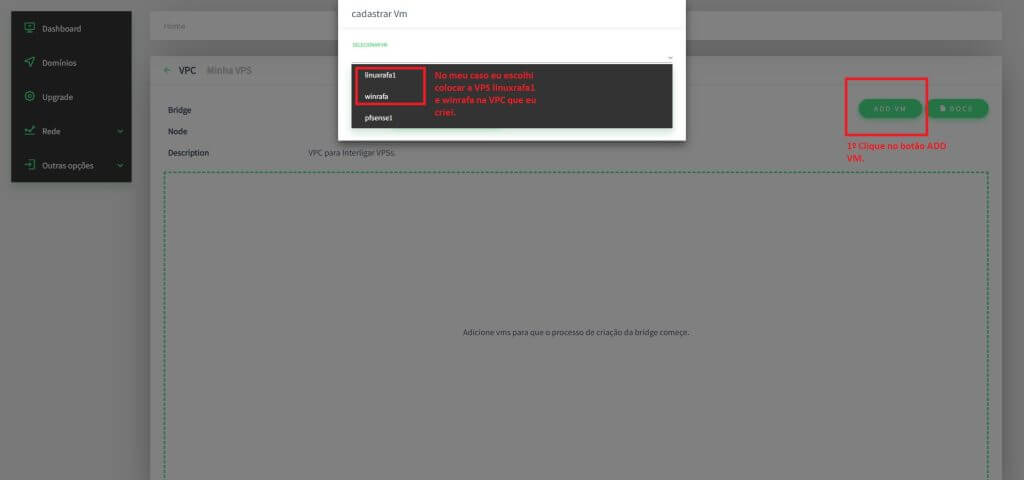
When you add the VPSs, they will be connected to the VPC, a status will be shown on the screen, while the status is offlineThis means that the VPC is still being created, this process may take a while and it is necessary for the VPC status to be online in order to continue with the configuration, important notice, this status is only of the VPC, not of the VPS, your VPS will remain online and accessible during this process, see the completed status in the image below, click to enlarge.
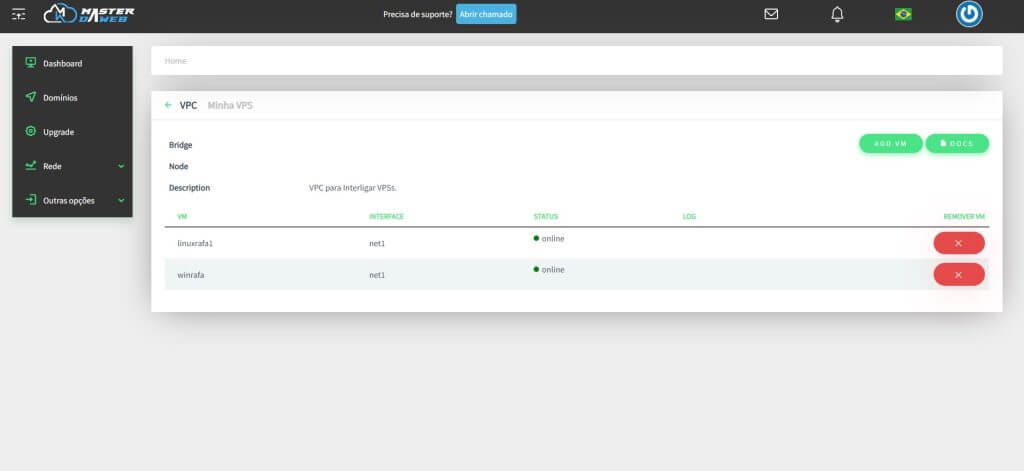
Once the status has gone online, the VPC has already been created and the VPSs you have added will be connected to the VPC. The VPSs will now have a second network interface, and it is on these that you will have to configure the desired IP for the VPSs to communicate through the VPC, remembering that on the VPC interface, which will always be the second interface of the VPS, you will have to configure a private IP type, which are the following ranges:
10.0.0.0/8 range from 10.0.0.0 to 10.255.255.255
172.16.0.0/12 range from 172.16.0.0 to 172.31.255.255
192.168.0.0/16 range from 192.168.0.0 to 192.168.255.255
After configuring the IP on the new interface, your VPSs will also be communicating through the VPC, see the images below for an example of configuring a second IP interface, click on the image to enlarge.
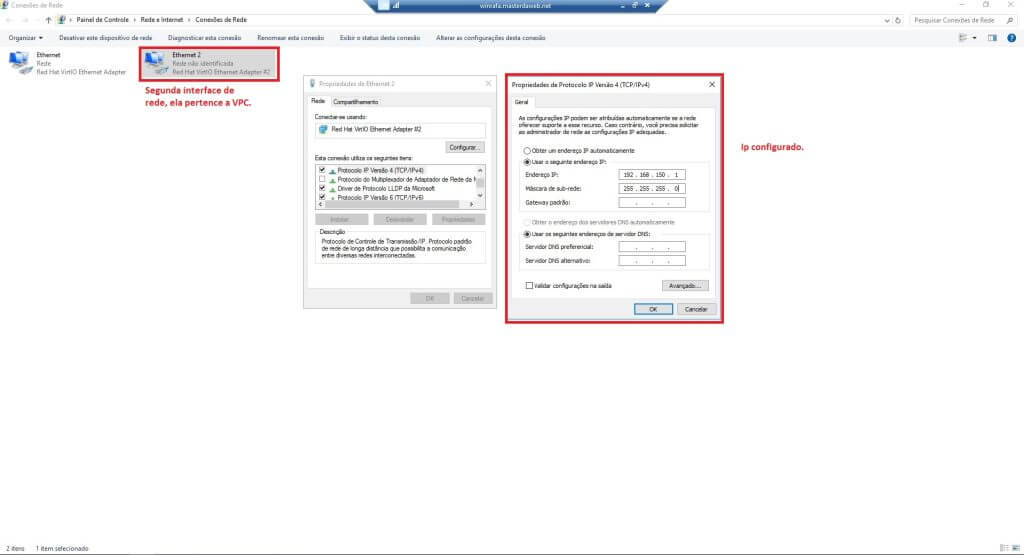

These are the network settings in Linux and Windows Server, pay attention to the Linux image, because it is necessary to create a static route, without this static route for the configured network, the VPC does not communicate, click on the image above to enlarge if necessary.
Lastly, we’re going to test connectivity to see if one server has a ping response for another. It’s important to note that I haven’t detailed how to set up a static network on either Windows or Linux, because here on our blog there are already other posts on how to set up the network. If you have any doubts, you can consult these posts to find out in detail how to set up the network on Linux and Windows, and never forget to create the static route for the network that was set up on Linux. I’ll put the links to the posts about network configurations below.
I hope I’ve helped, see you next time.
See this and other tutorials on our YouTube Channel!
